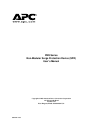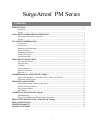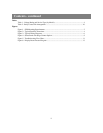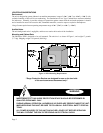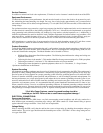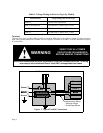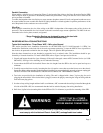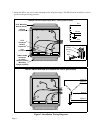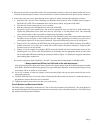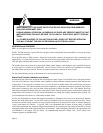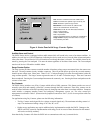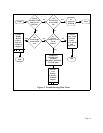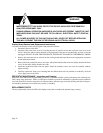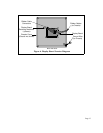
INTRODUCTION
Thank you for choosing the APC SurgeArrest PM3 Series Surge Protection Device.
The APC non-modular Surge Protection Device (SPD) is a high quality, high energy surge attenuation system that has
been designed to protect sensitive equipment from damaging transient voltage surges. Proper installation is impera-
tive to maximize the surge suppressor’s effectiveness and performance.
Read and understand all information contained in this manual prior to installation. This manual is to be used as a
guide for installing the device. The procedures contained in this manual are not intended to supercede local or
national electical codes. Check all applicable electrical codes to assure compliance. In all instances, local and/or
national electric code requirements are to be followed.
This device must be installed by a licensed electrician. The electrician should follow the steps outlined in this man-
ual to insure proper installation. A copy of the installer’s invoice detailing the installation of this device is
required in order to take advantage of the unit’s product warranty.
The PM Series non-modular product line is a parallel SPD designed for service entrance and downstream panelboard
applications.
The PM Series provides surge protection per phase and is available with a 120kA per phase ratings. All APC products
are extensively tested according to industry standards as set by IEEE C62.41, and C62.45, for Categories A, B, and C.
The connection method of these devices may require several feet of wire. Increased lead length adversely affects
clamping voltages.
Save this manual! It includes instructions regarding the product warranty and replacement parts.
Installation
During installation into an electrical system, SPD’s must NOT
be energized until the electrical system is completely
installed, inspected, and tested. All conductors must be connected and functional, including the neutral (if required).
The voltage rating of the device and system must always be verified before energizing the SPD.
Failure to follow these guidelines can lead to abnormally high voltage being applied to the SPD. This may cause the
SPD to prematurely fail or significantly shorten the effective life. The warranty does not cover an incorrectly installed
device.
Testing
Any factory or on-site testing that exceeds the normal operating voltage such as high-potential insulation testing, or
any other tests where the suppression components will be subjected to voltages higher than their rated "turn on" volt-
age must be run with the suppressor disconnected
from the power source. For 4-wire TVSS devices, the neutral con-
nection at the TVSS must also be disconnected
prior to performing high-potential testing and then reconnected upon
completion of the test.
Failure to disconnect this surge suppression device and its associated suppression components during elevated volt-
age testing will result in damage to the suppression components and/or other electronic components.
UNPACKING and PRELIMINARY INSPECTION
,QVSHFWWKHHQWLUHVKLSSLQJFRQWDLQHUIRUGDPDJHRUVLJQVRIPLVKDQGOLQJEHIRUHXQSDFNLQJWKHXQLW
5HPRYHWKHFDUGERDUGSDFNLQJDQGIXUWKHULQVSHFWWKHXQLWIRUDQ\REYLRXVVKLSSLQJGDPDJHV
,IGDPDJHIRXQGLVDUHVXOWRIVKLSSLQJRUKDQGOLQJLPPHGLDWHO\ILOHDFODLPZLWKWKHVKLSSLQJFRPSDQ\DQG
IRUZDUGDFRS\WR$3&
Storage
The unit should be stored in a clean, dry environment. Storage temperature is -40
o
C (-40
o
F) to +60
o
C (+140
o
F).
Avoid exposing the unit to areas of high condensation. All of the packaging materials should be left intact until the
unit is ready for installation. If the unit has been stored for an extended period of time, it may be necessary to clean
the unit and make a complete inspection of the unit prior to installing and placing it into service.
Page 1



